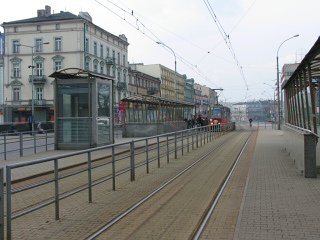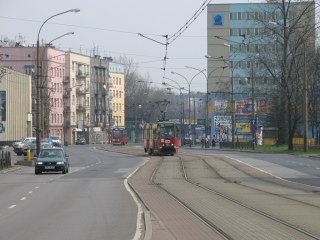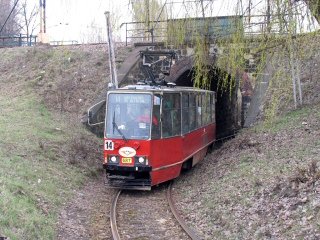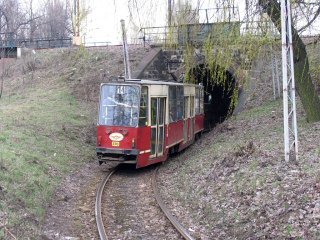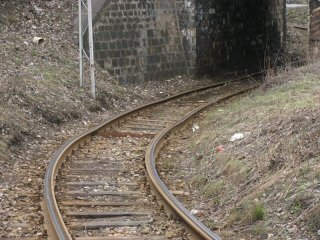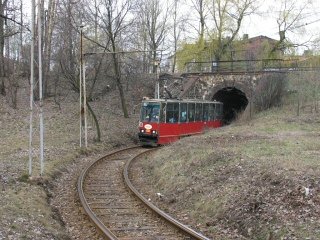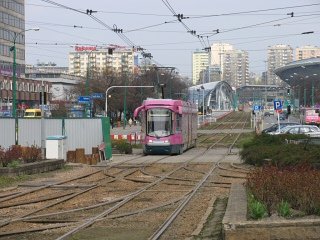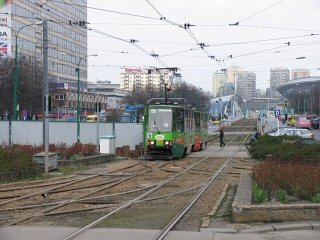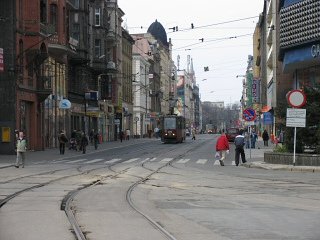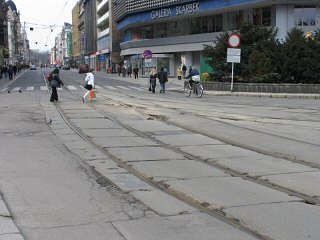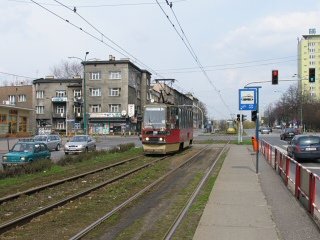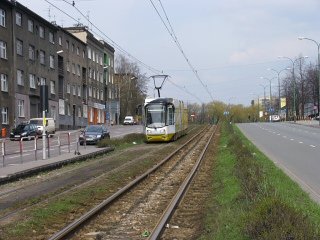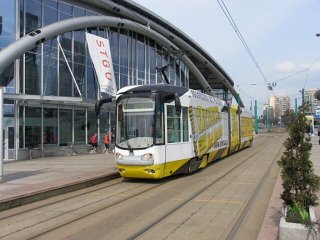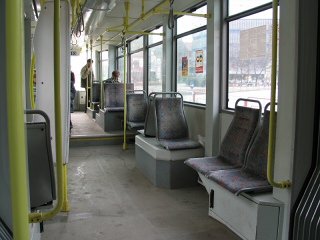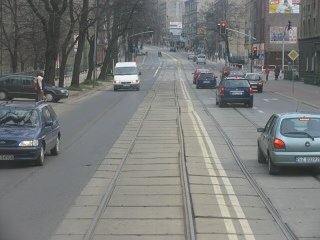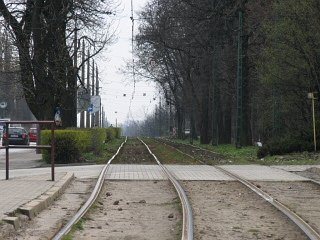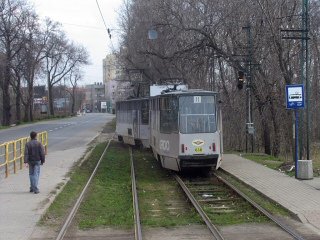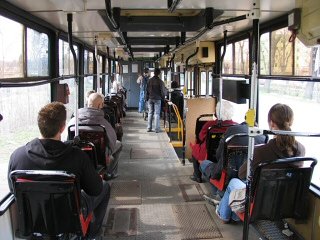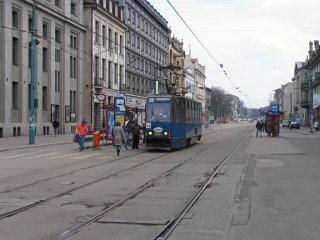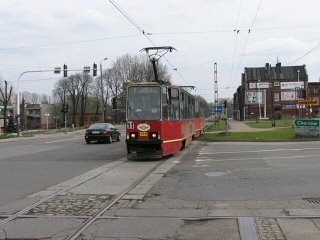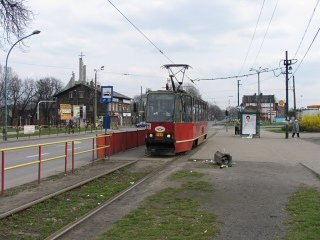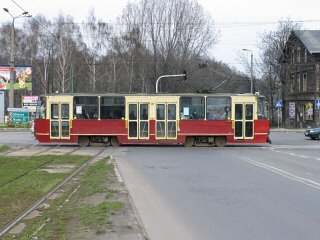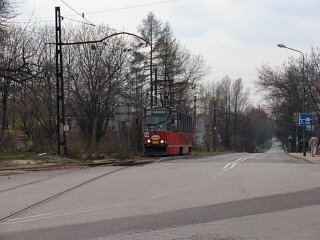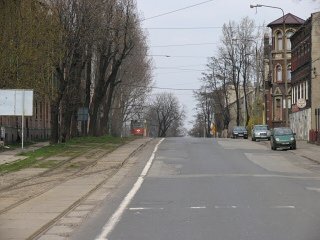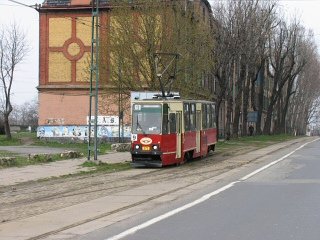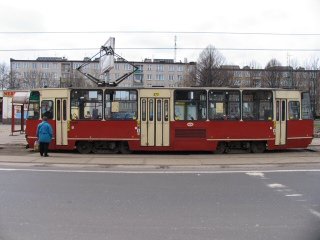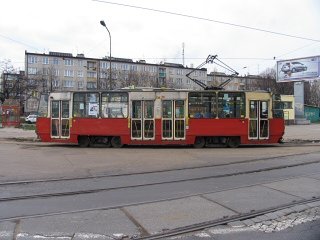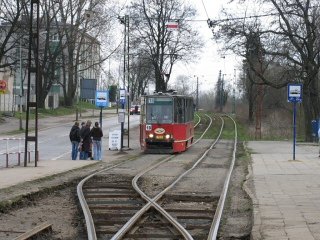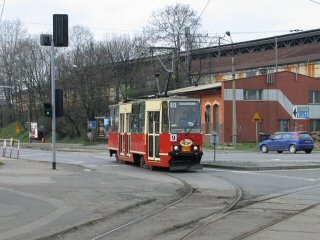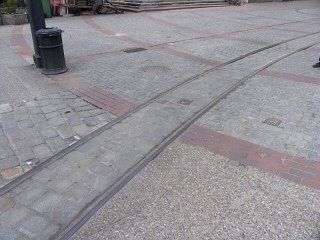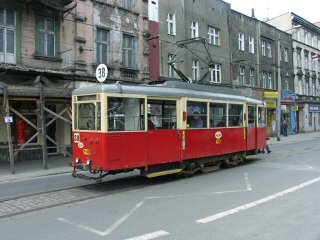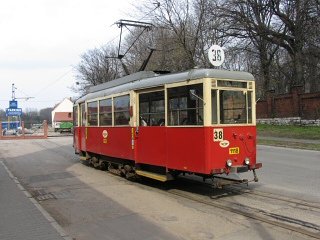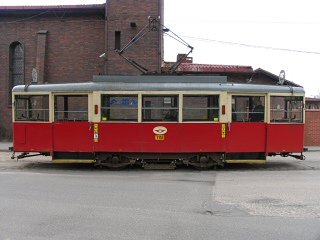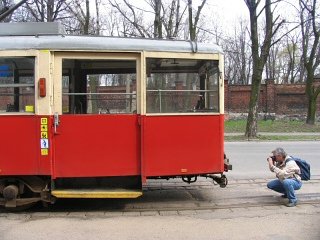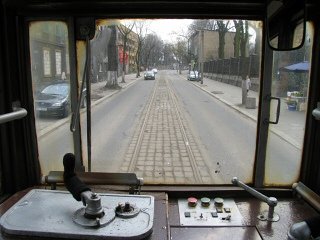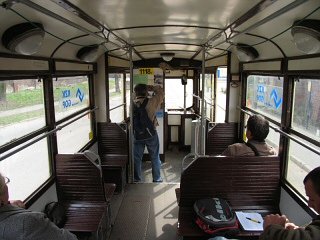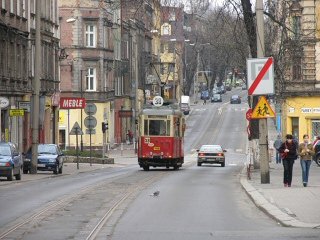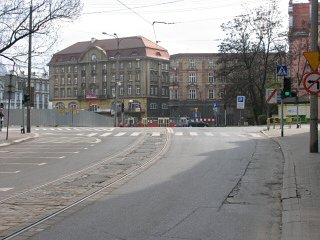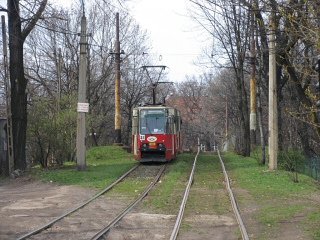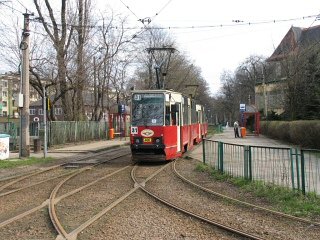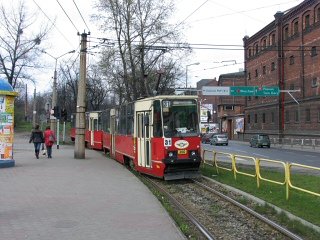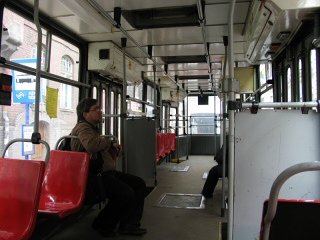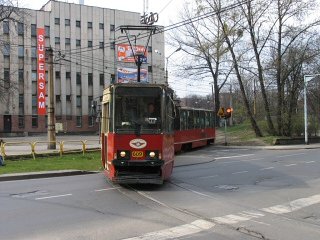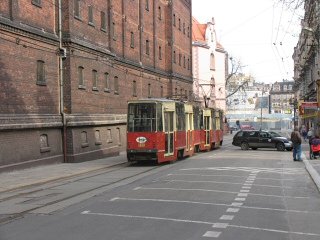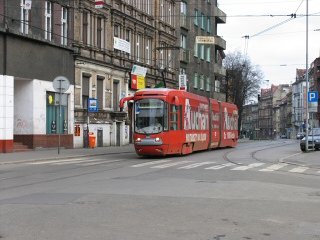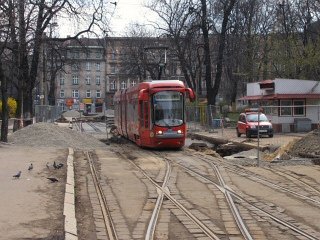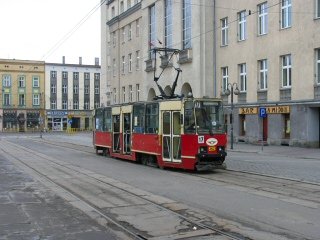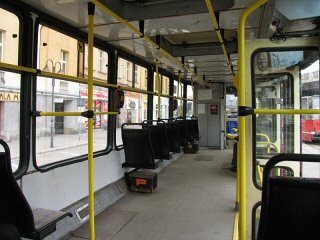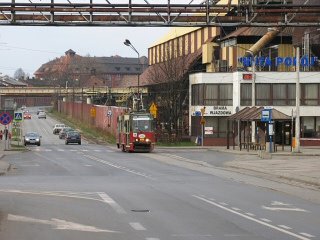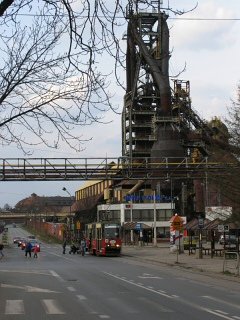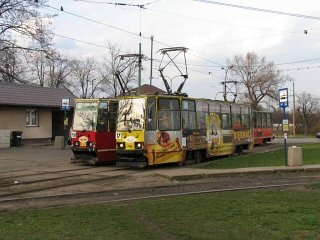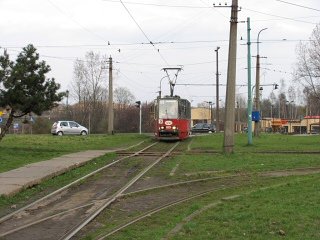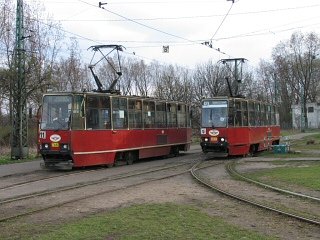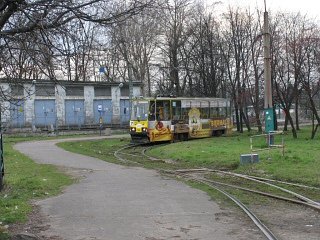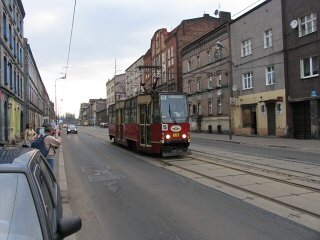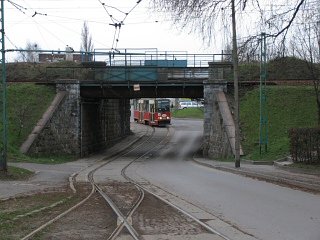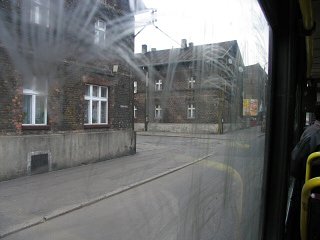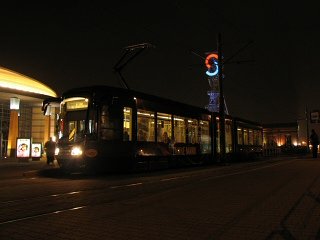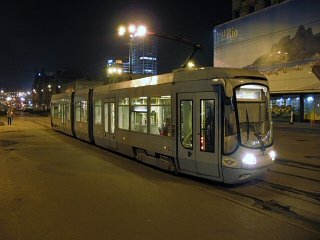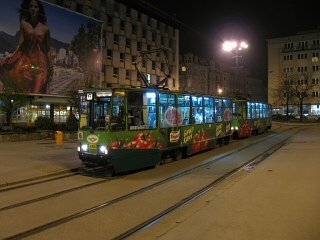budapest
other hungarian
close-up
lost rails
other countries
Tramwaje Śląskie is more than Katowice!
First, a personal note: I've grown up in a town (Budapest) with quite a large and diverse tramway network. I'm a regular guest in Vienna, another one of those typical European "tram cities". I've also travelled through Germany multiple times to try those interurban tram systems in the Rhine-Ruhr area, around Mannheim and Karlsruhe. Yet, the Upper-Silesian tramway network struck me as a great surprise. It's one of those "a league of their own" tram systems. In many cases it's being referred to as "the interurban trams of Katowice", a label which in my humble opinion misses the point that this is a fairly decentralised network in a loosely coupled urban area with many cities (like Będzin, Bytom, Chorzów, Czeladź, Dąbrowa Górnicza, Gliwice, Mysłowice, Ruda Śląska, Siemianowice Śląskie, Sosnowiec, Świętochłowice, Zabrze). I must admit, the whole operation is pretty anachronistic, and I don't think it fits modern needs properly: as in many Middle/Eastern-European cities, trams run where their tracks was laid hundred years ago, and not where the people of today live and work. But that probably adds even more magic to the whole thing for a tram freak like me - if someone would pay the trip for me, I would gladly wrote a book about it, with many-many pictures :)
After the first two hours riding the Silesian Tramway, my first thought was "oh boy, this is what the Ruhr-area tram network must have looked like in the 1950s". And the roots of this system really have much in common with the now truncated Ruhr-area trams: this too, is a mining area (coal and iron ore), with heavy industry that has lost some of its earlier importance. The history of the area is a complicated one: parts of it belonged to different rulers from time to time, e.g. Moravia, the Bohemian Kingdom, the Tatar Empire, various Polish and German Dukedoms. By the end of the 19th century, the western parts belonged to Prussia, the eastern parts to Russia, while a southern bit was part of Austria (more precisely its rulers were the Habsburgs of the Austro-Hungarian Empire through the Bohemian Crown, if I'm not mistaking). After WWI, the eastern part became Polish territory, while the western part (meanwhile belonging to Germany) followed after WW2.
The tramway network started out as a steam operation in the german parts: it was a 785-mm-gauge railway between Gliwice, Piekary Śląskie, Zabrze, Chebzie, Chorzów and Bytom. Besides re-gauging and electrification, some new local systems were also launched (1912 in Katowice, 1913 in Bytom). The network's eastern parts (around Sosnowiec, Będzin and Dąbrowa Górnicza) were built after 1928. Before and during WW2 Silesia was occupied by Germany, and this is when unification of these tramway operations started. The unity then remained, and since 2007 the tramway doesn't anymore belong to the Polish State, but the Upper-Silesian Transportation Association, with the trams themselves being operated by Tramwaje Śląskie S.A. (Please correct me, if I'm wrong!)
Unfortunately proper maintenance of this ~200 km network is an almost impossible task, let alone its full-scale modernisation. The last new line was built in the 1980s, and two lines were closed in 2006, so the future is a bit unclear. Nevertheless, I think the tram will find its place in this new world.
We started in Sosnowiec. Contrary to what I had expected, the tram stop at the railway station looked like we were in Germany (left). And even the trackage was OK (right). The vehicles we see here are Konstal 105N 4-axle tramcars - PCC "adaptations". The tram in the foreground has an (almost-)original front, while the one in the back was modernised recently.
Polish PCC trams were originally "cloned off" of a czech Tatra T1 tramcar (which was an authorized PCC license): in 1956 Warsaw bought two such cars. One of them was brought to Konstal, and in three years time the 13N tramcar was introduced. Series production started in 1962, and until the 1990s many thousands of different PCC-based trams were built for different polish tramways. Of course they altered the construction over the time, and I heard they even bought certain parts from Belgian PCC licence-holder ACEC.
Heading for Katowice, we found this delicate underpass near a branch-off.
This line (leading to Mysłowice) shows a few typical features of the Upper-Silasian Tramway (including track faults and rusty old overhead posts).
Katowice's city center (photographed at Rynek) looked like if it was built to compete with the communist-style avenues of Warsaw. When the sun was shining, and the tram approaching was a partially-low-floor one (left), it looked like France. In a clouded situation with an old PCC-clone (right), it was less pleasant.
The old main street looked even more run-down - especially the tram tracks!
What I found remarkable about Upper-Silesia was how different ambits were following each other, without warning: in one moment you're in a bucolic small-village, but only two corners away it turns into an old mining colony. Then comes a forest, after which you find a modern highway being crossed on a flyover, and after a high-rise housing area you suddenty see a row of delicate old civic houses which look like they were in Switzerland...
The strange-looking 105N on the left was restored to its original looks recently - note the driver's cab: windows everywhere! The partially-low-floor tram to the right is a 116Nd, also called "Citadis 100" by the current owner of the Konstal factory, Alstom.
A modern view with a modern tram. I must say, these Citadis trams are not up to the same standards as the ones in Barcelona or Rotterdam. Their interior is very spartan, and they rattle very loud. On the other hand the mere fact that they don't derail on the horrible tracks between Chorzów and Bytom is a wonder in itself (okay, there are almost equally bad tracks in Budapest, too, but they don't ride on them as fast as here:).
Riding some of the lines is like riding a roller-coaster!
A short video of a 105N on one of these bad stretches. Sorry for the caption in the picture, but I wanted to filter out the tremor of my hands, so that the scary movements of the tramcar can be observed better.
And this is what it feels like riding on such tracks. No, I wasn't shaking the camera: just look at the the fellow passengers how they're trying to maintain their balance :)
To the left: a passing loop somewhere. To the right: the interior of an average 105Na. I have read somewhere that these vehicles are called "aquarium" because their large windows.
To the left: Tramwaje Śląskie recently bought (received? loaned?) a number of trams from Krakow. These can be recognised by their original blue livery and the letter "k" after their fleet number. To the right: crossing near the stop Piaśniki Skrzyżowanie. One side of the road is like a 19th century mining colony, the other is a communist-type highrise housing area (not shown on this photo)...
The same crossing from two more viewpoints. The second one also shows the strange double-door layout in the middle, which was removed on some 105Na cars.
Just about a kilometer away from the previous photo location is a somewhat awkward triangle junction at Łagiewniki Targowisko.
This is a strange bird: this type (designated 111N) has doors on both sides - although the very narrow ones at the ends can hardly be used.
We went to Bytom from here. Unfortunately the tram tracks in that city's center were not serviced, so we walked a bit. The stop on the right is Łagiewnicka.
The tracks on the right edge of the left picture were the ones without usage. In Dworcova in downtown Bytom we found some 785-mm-gauge tracks in the pavement (right). I'm not sure if they were really that old, or were put there as a monument, though.
Bytom features a unique operation: route 38 was originally to be suspended due the reconstruction of the downtown area, but local people wanted to retain service on this line between the main square and a cemetery on the top of a hill (Powstańców Śląskich).
Therefore two old four-wheel tramcars were restored, which now operate this single-track line (normally just one car at a time). By the way, these trams - called type N - are "copies" of the WW2 german "wartime standard car" (KSW - Kriegesstrassenbahnwagen).
Access to the car is via hand-operated sliding doors.
Two interior shots.
In fact this is not a well-maintained museum car, but the ride was fun!
To the left: the "KSW" leaving the main square terminus. On the other side of that square (shown as Kościół św. Trójcy on my map) we suddenly spotted a tram on the currently unserviced track (right side, in the back). It turned out to be a depot ride.
So we followed that depot ride. These tracks are I believe part of a loop system in the inner city, but now only one track was used by a two-car shuttle service.
The shuttle service had 3 or 4 stops (including termini), and was not really crowded.
As we headed back to the inner city, another depot ride passed by on the unserviced track.
With the city loop missing, Bytom's tram life concentrates on Plac Sikorskiego, where route 6 was reversing on a triangle.
From Bytom we went back to Chorzów, where we tried some east-running routes. To the left: Chorzów Ratusz, to the right: a modernised 105Na from the inside.
The vicinity of Nowy Bytom Huta Pokój can be best described as "industrial" or "like the old Ruhr-area".
Our next stop was at Chebzie Pętla, which is a totally unrealistic junction/terminus complex, with routes coming from every direction. I used the word "unrealistic", because the place is located outside the town, which seemed a bit unsuited to me.
Points and loops everywhere :)
A typical ride: entering single-track right-of-way, diving under a railway, entering the middle of a roundabout.
There are two main tram corridors (direct routes) between Chorzów and Katowice, but the "lower" one was truncated when we were there, so trams reversed at Chorzów Batory - a depot only used for storage nowadays.
Running through Chropaczów with route 17.
To the left: a still of Chropaczów through the scratched window of the tram. To the right: Silesia City Center is a large and quite nice mall along the highway connecting Katowice and Chorzów. I think it's best suited for a quick meal.
The big, illuminated red-blue letter "S" in the background reminded us slightly on the logo of the "Skála" stores, which were Hungary's first "almost-like-in-the-West" chain of supermarkets and malls in the seventies. I later did a little research, and was surprised to see that Silesia City Center was built by the same hungarian enterpreneur (or more precisely, by his company), who once founded "Skála". The world is sooo small ;)
Our train back to Hungary departed around midnight, so we stayed a bit, although taking photos was not easy without a tripod. But just to show the ambience of the Rynek in Katowice, here are two pictures.
I loved this visit - too bad we only had one day here, we could only ride cca. 30% of the whole network. I certainly hope I can come back soon to experience that missing 70%, too! :)
Back to the top Back to the main page
